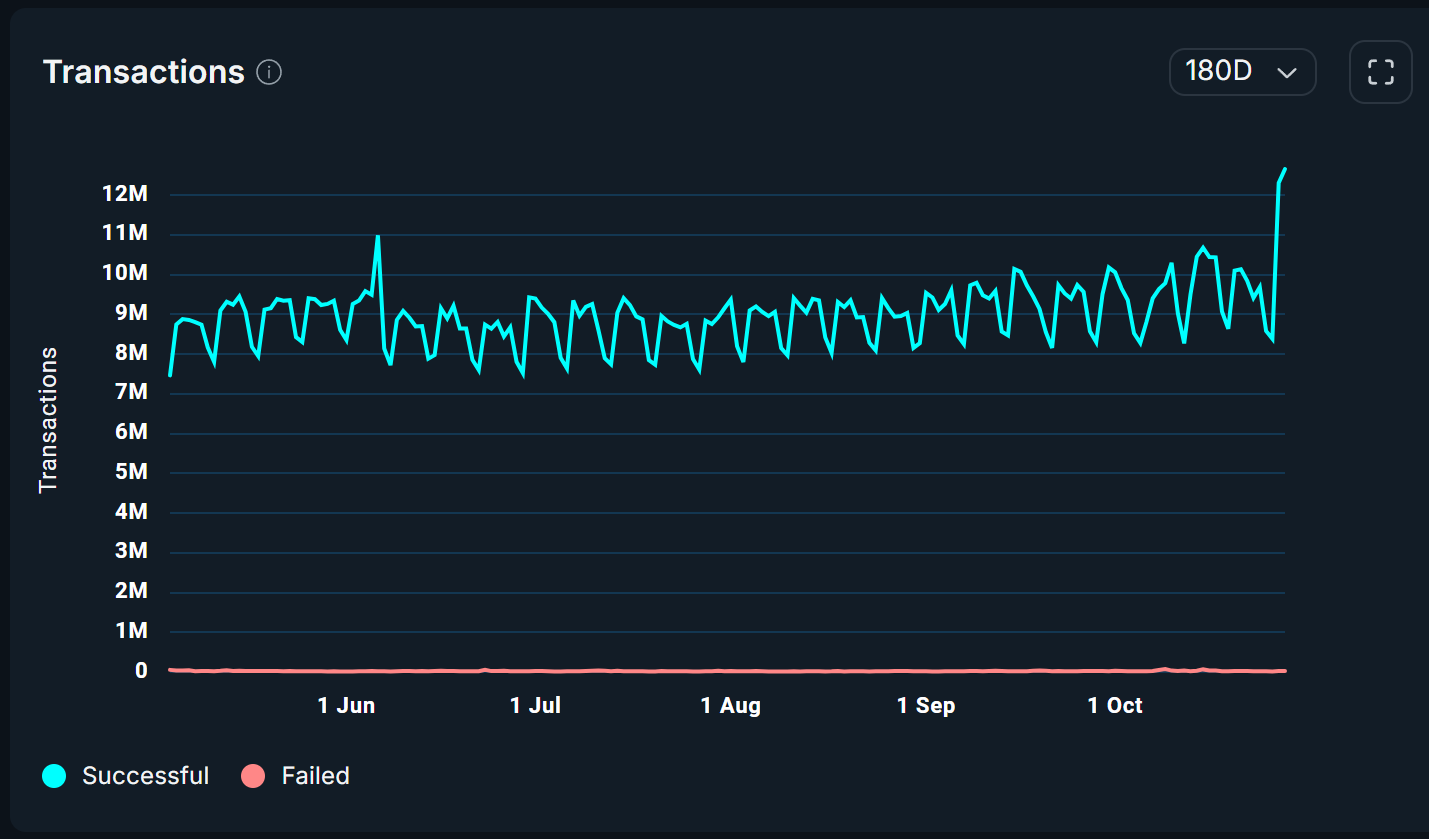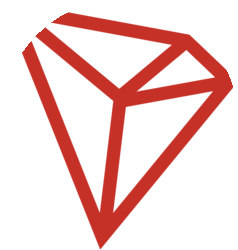Tron network activity has surged with a 69% increase in weekly active addresses to 11.1 million, driven by retail adoption and high-speed, low-cost transactions. On Tuesday, it recorded 5.7 million daily active addresses and 12.6 million transactions, the highest in two years according to TRONSCAN data.
-
Record-Breaking Transactions: Tron’s daily transaction count hit 12.6 million on Tuesday, the network’s largest since June 2023, reflecting robust user engagement.
-
Daily active addresses reached a peak of 5.7 million, surpassing the prior record and indicating growing retail participation on the blockchain.
-
Weekly growth stands at 69% for active addresses, totaling 11.1 million, the most significant rise among major blockchains as reported by Nansen.
Discover the surge in Tron network activity: 69% weekly rise in active addresses to 11.1M, record 12.6M transactions. Explore USDT’s role in global adoption and financial inclusion. Stay informed on blockchain trends today.
What is Driving the Surge in Tron Network Activity?
Tron network activity is experiencing unprecedented growth due to increasing retail adoption and the appeal of its high-speed, low-cost transaction capabilities. Blockchain data from TRONSCAN indicates that daily active addresses climbed to a record 5.7 million on Tuesday, eclipsing the previous day’s high of 5.4 million. This boom, coupled with 12.6 million transactions processed that day—the highest since June 12, 2023—highlights Tron’s rising prominence in everyday crypto usage.
Activity on the Tron network has been booming, with a notable 69% week-on-week rise in active addresses reaching 11.1 million overall. This escalation points to more users engaging in transactions than ever before, fueled by the chain’s efficiency. Blockchain analytics platform Nansen noted in a recent post that this represents top-tier throughput without any major hype, underscoring the organic demand.

Data from Nansen further illustrates a 69% rise in daily active addresses over the past week, hitting nearly 11.1 million and marking the largest such change among leading blockchains. This sustained momentum suggests Tron is solidifying its position as a go-to platform for cost-effective digital asset transfers.
Why is USDT So Popular on the Tron Network?
USDT on the Tron network has become a preferred combination for users seeking reliable stablecoin transfers, processing between 15-20 million Tether (USDT) movements weekly. While Tron’s decentralized finance ecosystem lags behind Ethereum’s in complexity, its simplicity and speed make it ideal for everyday payments, especially in regions with limited banking access. According to Nansen data, a significant portion of Tron’s transactions involve USDT, alongside native TRX tokens and other assets.

It is widely adopted in Africa, Asia, and South America, where residents leverage the high-speed, low-cost US dollar-pegged token for remittances and value storage amid restricted access to traditional USD. Tether achieved a milestone of 500 million USDT users on October 21, with CEO Paolo Ardoino describing it as potentially the largest financial inclusion effort in history. The World Bank Group estimates that 1.4 billion adults worldwide lack bank accounts, positioning crypto solutions like Tron-based USDT as vital tools for inclusion—anyone with a smartphone can now secure funds via a wallet.
USDT remains the dominant stablecoin, boasting a market capitalization of $183.2 billion and a 58.8% share of the stablecoin market, per CoinGecko figures. Circle’s USDC follows with $76.2 billion. In terms of circulation, Ethereum hosts the most USDT at $83.4 billion, but Tron is a close second with $78.7 billion, as shown in DefiLlama data. This near-parity underscores Tron’s efficiency in handling stablecoin volume, contributing to its overall network surge.
Experts emphasize that Tron’s architecture supports this scalability without compromising security, making it a backbone for global crypto payments. Blockchain analysts from Nansen highlight how such activity patterns indicate maturing infrastructure, with transaction fees remaining fractions of a cent even at peak volumes. This reliability draws in users from emerging markets, where economic instability amplifies the need for accessible digital dollars.
Frequently Asked Questions
What Factors Are Contributing to Tron’s Record Active Addresses in 2025?
Tron’s record active addresses, peaking at 5.7 million daily, stem from strong retail adoption and the network’s low fees paired with fast processing times. Data from TRONSCAN shows a 69% weekly increase to 11.1 million addresses, outpacing other major chains. This growth reflects broader financial inclusion efforts, particularly in underserved regions.
How Does Tron Compare to Other Blockchains in Transaction Volume?
Tron stands out with 12.6 million daily transactions on Tuesday, the highest in two years, surpassing many competitors in raw throughput. While Ethereum leads in DeFi complexity, Tron’s focus on simple, affordable transfers—especially for USDT—drives its edge in high-volume, everyday use. Nansen reports confirm this positions Tron as a leader in cost-effective blockchain operations.
Key Takeaways
- Explosive Growth in Activity: Tron’s weekly active addresses jumped 69% to 11.1 million, signaling robust user engagement without relying on hype.
- USDT Dominance: The network handles 15-20 million USDT transfers weekly, making it a key player in stablecoin adoption across Africa, Asia, and South America.
- Financial Inclusion Impact: With 1.4 billion unbanked adults globally, Tron’s low-cost model empowers mobile-based wallets for secure fund storage and transfers.
Conclusion
The surge in Tron network activity, marked by record daily addresses and transactions, alongside the popularity of USDT on Tron, illustrates the blockchain’s critical role in advancing global financial access. As adoption continues to rise in emerging markets, Tron’s efficient infrastructure promises to bridge gaps left by traditional banking. Investors and users alike should monitor these trends, as they signal a maturing crypto ecosystem poised for even greater integration into daily finance.
